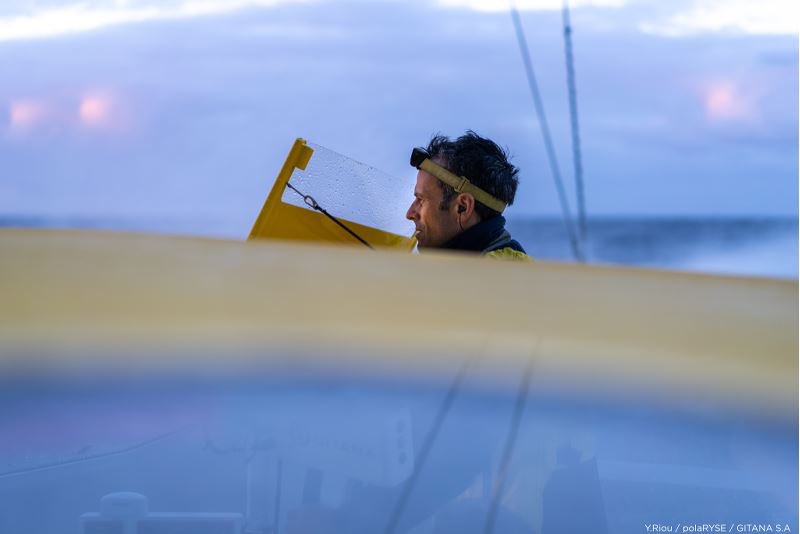

After a relatively peaceful two-day transition along the Brazilian coast, the crew of the Maxi Edmond de Rothschild has begun to put some easting into its course, gradually bending the 32-metre giant’s trajectory round towards the point of entry into the Southern Ocean, the Cape of Good Hope. Very quick over the past four hours with an average speed of over 35 knots at the 07:00 UTC position report, Franck Cammas, Charles Caudrelier and their four crew have also increased their lead over the current record holder to 428 miles this Monday morning. We’ve got it, aboard the flying maxi-trimaran the pace is set to accelerate over the coming hours whilst the temperature will drop as the six sailors plunge towards the southern latitudes.

Since exiting the doldrums on Friday, the six sailors aboard the Maxi Edmond de Rothschild have benefited from mild sailing conditions throughout the weekend. They’ve managed to post high speeds on a long sprint on port tack offshore of the Brazilian coast, without forcing things for either the boat or the men. Franck Cammas commented on their performance: “we’ve maintained some high average speeds at some points of sail, which aren’t usually synonymous with going so fast. We knew that the Maxi Edmond de Rothschild was capable of doing that, but it’s always better to have confirmation of it out on the water. One of the strengths of this flying boat is being swift when sailing close to the wind, as we have been over the past three days.”
Despite the constant speed, the men of Gitana Team have benefited from the ordered seas and warm yet very pleasant temperature to get some rest, whilst also going around the boat, checking the platform and the systems before they dive down towards the Deep South.
Change of atmosphere ahead
“It’s pitch black and we’re making very fast headway aboard the Maxi Edmond de Rothschild. The boat is sailing under autopilot, settled into position at 35 knots, regularly offering up 39, 38 knots to the crewman on watch, who has his hands on the mainsheet traveller, poised to ease if need be”, begins the nocturnal message from Yann Riou, our media crewman, before continuing his picture postcard in the company of one of the boat’s skippers, Franck Cammas: “We’re at 30° south and we’re going to have to further increase our longitude, but we’re gradually approaching the start of our circumnavigation of the Antarctic and the Southern Ocean. Last night, I pulled out the fleece I’d taken off to the south of the Canaries, which is the first indication of a change of atmosphere. The temperatures have dropped quickly, because offshore of Rio yesterday we were still very hot on deck. The wind will swing round to offer us more downwind conditions within the next ten hours or so!”
After covering more than 5,500 miles over the ground since leaving Ushant, making an average speed of 28 knots, the crew led by Franck Cammas and Charles Caudrelier is about to reach one of the first objectives it had set itself. Indeed, coordinating their connection with a train of austral low-pressure systems is a crucial point for this start to the record and a very tricky section for tackling the Indian Ocean with a competitive time. The six sailors have managed to absolutely nail the timing of this first major appointment.
Notifications